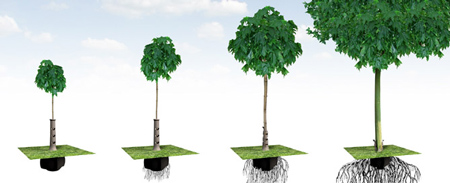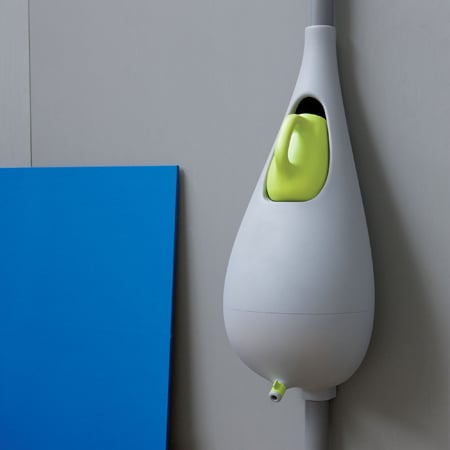
A Drop of Water and Bioplastic Planter by Bas van der Veer
Dutch Design Week 09: Design Academy Eindhoven graduate Bas van der Veer has won the prize for best project at the school's Graduation Galleries exhibition, which opened in Eindhoven yesterday.
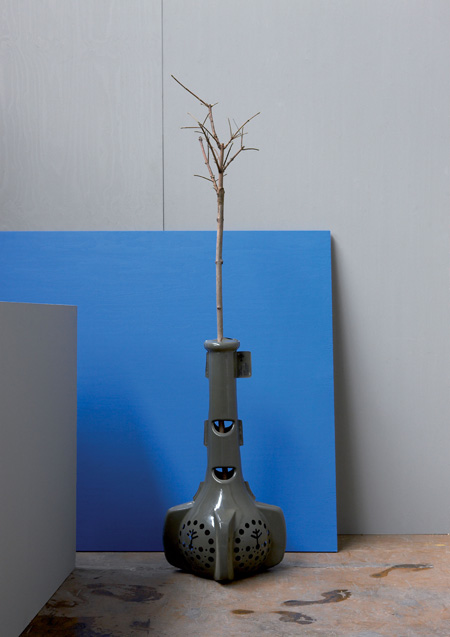
Van der Veer presented two projects: a rainwater storage butt with an integrated watering can called A Drop of Water (top and below), and a biodegradable packaging system for plants called Bioplastic Planter (above).
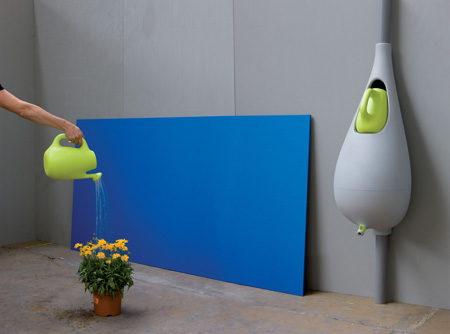
Van der Veer won the René Smeets award, which is given each year to the best body of work and is named after the academy's founder.
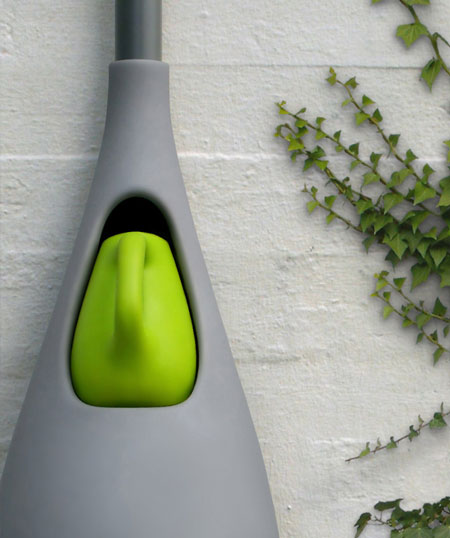
Graduation Galleries continues at Design Academy Eindhoven until Sunday 25 October during Dutch Design Week.
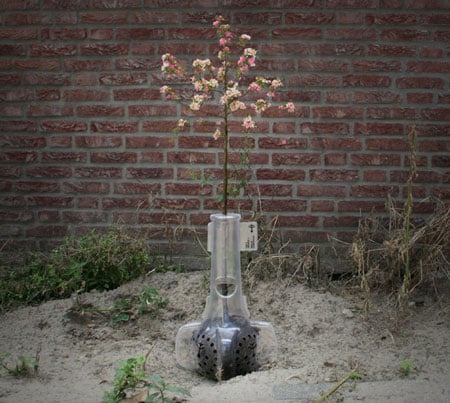
Top photos are by Astrid Zuidema. Here's some text from Design Academy Eindhoven:
--
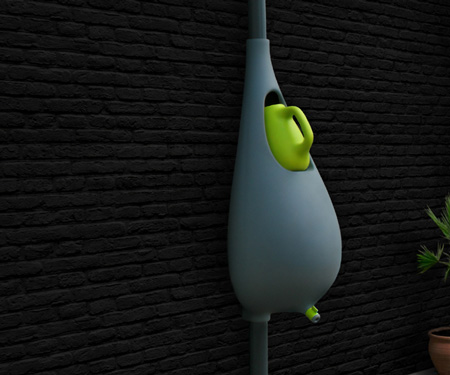
A Drop of Water
Thousands of litres of water disappear via the rain pipe into the sewer during a rain shower. At the same time, an average household uses litres of drinking water to irrigate the garden. Bas van der Veer combined these two concepts in A drop of water: a rainwater butt with an integrated watering can. The light grey water butt is attached to the rain pipe, so during a rain shower the watering can is automatically filled. Once it is full, the rest of the water flows over into the water butt, so serving as a reservoir. “In this way, it is easier for the users to water their garden using rain water instead of drinking water from the tap.”
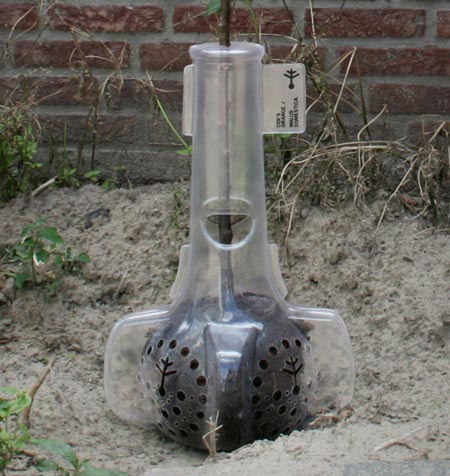
Bioplastic Planter
Bas van der Veer believes in the future of biodegradable materials. “After use they serve as raw materials for the natural world.” Van der Veer devised the Bioplastic Planter: a biodegradable container that makes the transport and planting of young trees easier. The Planter supports the tree after it has been planted, against the wind for example, and ensures that it does not have to be clamped by stakes and rubber bands. When the tree’s roots begin to shoot, the Bioplastic Planter biodegrades under the influence of light, moisture and mould. The material then becomes feed for the tree. In this way, it automatically returns into the cycle of the natural world, and it serves the natural world rather than damaging it.
